Just because you want to nutritional benefits of working with whole wheat flour doesn’t mean that you have to sacrifice the light and fluffy texture that so pleases the palate. There are some fabulous options that you can enjoy with the different types of wheat that are available!
I’ll never forget the first time I attempted to make whole wheat bread. Though it sure did smell good when it was cooking baking, eating it was a whole ‘nother story. It was so heavy and dense that my husband and I jokingly set it in front of a door and referred to it as our doorstop—that is until I thought about all of those starving varmints that might desire it for other purposes. Thud! It went into the trash. With my limited knowledge I thought that this heaviness was just how it was when one wanted the healthy nutrients of whole wheat bread. Little did I know that cooking with the right ingredients made all the difference in the world, but even more importantly, I hadn’t yet discovered whole wheat grain that I could purchase known as “white wheat.”
 When I see the big bags or buckets of wheat grains they usually contain the Winter Red Wheat.. So that’s what I always purchased for years. Since it’s a winter wheat, it’s really hearty as it’s grown in more harsh conditions. I had just assumed that whether I was making pancakes, rolls, bread, or cookies I would just have to learn to like the hearty, heavier texture. I mistakenly assumed that any “white” flour was void of all of the good nutrients because it was “white” due to all of the processing and bleaching that it underwent prior to making its way to the grocery store shelves. But my baking options all changed the day that I discovered that I could still store whole wheat for centuries without having to learn to exclusively enjoy the heavy-handed baking. You see, there is such a thing as Soft White Wheat and comes in 20-50 pound bags and buckets just like your Hard Red Wheat but the Soft White Wheat is what is most commonly used for the lighter baking options such as rolls, cookies, and biscuits and other light and buttery baked goods. I can store plenty of both and use each kind independently of each other or blend them together along with the proper leavening tools. Either way, I no longer have to sacrifice quality nutrients or shelf-life stability. (What are the different types of wheat? Well, there are several kinds of wheat which use a variation of Soft, Hard, White, Red, Durum, as well as Winter and Spring. The grocery industry refers to them differently than does Wall Street but we’re not going to get into all of that today.)
When I see the big bags or buckets of wheat grains they usually contain the Winter Red Wheat.. So that’s what I always purchased for years. Since it’s a winter wheat, it’s really hearty as it’s grown in more harsh conditions. I had just assumed that whether I was making pancakes, rolls, bread, or cookies I would just have to learn to like the hearty, heavier texture. I mistakenly assumed that any “white” flour was void of all of the good nutrients because it was “white” due to all of the processing and bleaching that it underwent prior to making its way to the grocery store shelves. But my baking options all changed the day that I discovered that I could still store whole wheat for centuries without having to learn to exclusively enjoy the heavy-handed baking. You see, there is such a thing as Soft White Wheat and comes in 20-50 pound bags and buckets just like your Hard Red Wheat but the Soft White Wheat is what is most commonly used for the lighter baking options such as rolls, cookies, and biscuits and other light and buttery baked goods. I can store plenty of both and use each kind independently of each other or blend them together along with the proper leavening tools. Either way, I no longer have to sacrifice quality nutrients or shelf-life stability. (What are the different types of wheat? Well, there are several kinds of wheat which use a variation of Soft, Hard, White, Red, Durum, as well as Winter and Spring. The grocery industry refers to them differently than does Wall Street but we’re not going to get into all of that today.)
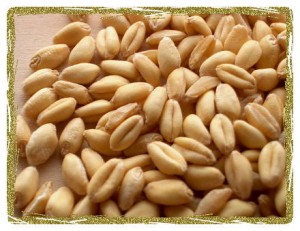 The white and soft wheats have a lighter color, with starchy kernels and a more fluffy texture after grinding; this is the wheat that’s most commonly used for the cakes, pie crusts, biscuits, and pastries. Whereas the Hard and Red types are usually reserved for bread due to it’s higher percentage of gluten—which is also why you don’t need to use wheat gluten when making traditional whole wheat bread, but you DO need it if you’re making bread with older flour or the White and Soft types of wheat.
The white and soft wheats have a lighter color, with starchy kernels and a more fluffy texture after grinding; this is the wheat that’s most commonly used for the cakes, pie crusts, biscuits, and pastries. Whereas the Hard and Red types are usually reserved for bread due to it’s higher percentage of gluten—which is also why you don’t need to use wheat gluten when making traditional whole wheat bread, but you DO need it if you’re making bread with older flour or the White and Soft types of wheat.
The Soft White Wheat berries will sprout just like any other whole grain or seed and I’ve found that I enjoy a hot breakfast made of a combination of the white and red wheat berries much more than the traditional hearty red berries alone.
 I don’t know if you’ve run into this before but I’ve had a bit of a challenge getting the youngin’s to enjoy the hearty Hard Red Wheat bread as much as the typical white flour that they’re used to. But when I switch it up to making bread or pancakes from the Soft White Wheat, I have much better success with the picky eaters. I prefer Durum to make my homemade pastas but you can just as easily accomplish a good pasta, spaetzel, or dumplings with the soft white wheat. I also make a yummy whole wheat cracker from the Hard Red Wheat, but I can play around with more subtle tastes such as cheese and garlic and have the tastes more pronounced when I make the crackers with the Soft White Wheat.
I don’t know if you’ve run into this before but I’ve had a bit of a challenge getting the youngin’s to enjoy the hearty Hard Red Wheat bread as much as the typical white flour that they’re used to. But when I switch it up to making bread or pancakes from the Soft White Wheat, I have much better success with the picky eaters. I prefer Durum to make my homemade pastas but you can just as easily accomplish a good pasta, spaetzel, or dumplings with the soft white wheat. I also make a yummy whole wheat cracker from the Hard Red Wheat, but I can play around with more subtle tastes such as cheese and garlic and have the tastes more pronounced when I make the crackers with the Soft White Wheat.
Of course you’ll still want to stick to the standards of quality when purchasing the Soft White Wheat—Grade A, and make sure you’re getting the most recent year’s harvest. But you won’t have any problem storing it the very same way you store your Hard 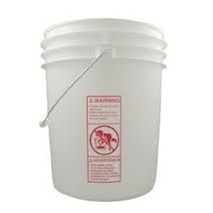 Red Wheat. And keep in mind that it’s best to keep it in its whole grain form until you’re ready to use it. When you expose the flour to oxygen then it’s naturally occurring Vitamin E oil will be exposed and turn rancid. Also, know that the Soft White Wheat takes on the smell of its packaging (such as the #10 cans), so if you open it up and it smells a bit like the can it’s been
Red Wheat. And keep in mind that it’s best to keep it in its whole grain form until you’re ready to use it. When you expose the flour to oxygen then it’s naturally occurring Vitamin E oil will be exposed and turn rancid. Also, know that the Soft White Wheat takes on the smell of its packaging (such as the #10 cans), so if you open it up and it smells a bit like the can it’s been 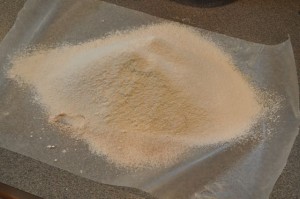 stored in, just let it aerate for about 8 hours by spreading it out on a wax paper lined cookie sheet. Once aerates it will be just fine.
stored in, just let it aerate for about 8 hours by spreading it out on a wax paper lined cookie sheet. Once aerates it will be just fine.
Hopefully this will help you solve any dilemmas with taste and texture. Now, I’m off to go and try my hand at making some dark rye bread in which I’ll use the soft white wheat I just ground. I’ll let you know how it turns out. Oh, and by the way, even if you’re working exclusively with the Hard Red Wheat, you still don’t need to sacrifice taste and texture. Check out my 100% Whole Wheat Bread Recipe. (The breadsticks are super duper yummy too.) I’ve even had several readers use this recipe to enter their local fair and win the coveted blue ribbon! Enjoy!
Join us on Facebook – Follow us on Twitter – Check out our in-home-educational programs – Subscribe to Preparedness Pro
For any questions or comments on this article, please leave a comment on the blog site so that everyone can benefit!
Copyright Protected 2011, Preparedness Pro and Kellene. All Rights Reserved. No portion of any content on this site may be duplicated, transferred, copied, or published without written permission from the author. However, you are welcome to provide a link to the content on your site or in your written works.

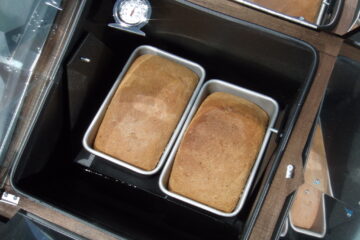
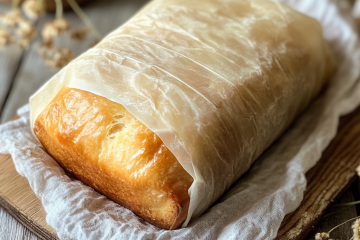
13 Comments
Sage Hill · December 4, 2011 at 4:13 am
In addition to soft white wheat, there is also hard white wheat. It makes great bread. After quite a bit of experimentation and doar stop loaves, I discovered Peter Reinhart’s book about making whole grain breads. His method has an extra step – mixing the night before you bake – but it’s really worth it. I’ve been making a couple of loaves every other week for about 6 months to rotate our wheat storage and we’ve really been enjoying them.
Kellene · December 4, 2011 at 6:53 am
I enjoyed Reinhart’s book. But being the laziest Preparedness Person in the World, I elected to coax the dough to be nice to me in other ways. I can make a perfectly light and yummy loaf–from grinding to eating–in just under an hour. 🙂
AutumnGal · December 4, 2011 at 10:48 pm
Kellene, I do declare, you read my mind … (Now, that’s a scary thought! Lol)
What would an old(er) newbie have to do to get you to share your “yummy whole wheat cracker” recipe and any tips I should need to know? We eat a lot of crackers and I’ve tried making crackers but they were ehh not crisp but hard as rocks 🙁
Wish I had a slice of your rye bread with a good chunk-a-cheese:)
Kellene · December 5, 2011 at 10:56 pm
Your wish is my command–tomorrow. 🙂
charli · December 5, 2011 at 12:07 pm
Kelleene, thanks for this information. Do you have a source for certified organic grains (25-50lb. bags,buckets)? I do not wish to ingest any GMO’s. Any info you may pass along is so greatly appreciated and needed.
Thank you for all you do.
Cathie in Ut · December 5, 2011 at 5:33 pm
Not to throw a monkey wrench into the wheat thing but once I read the book Wheat Belly I have grave doubts about what has been done to wheat in regards to so many of the problems not limited to celiac spru (sorry I am a terrible speller).
I have wheat in my storage but both my hubby and I are gluten free and I am trying to figure out how to store what will work for me in the future.
jessica · December 5, 2011 at 10:49 pm
I was just discussing soft wheat with my husband this morning! Good to learn more information. Thanks!
Fred · December 9, 2011 at 7:20 pm
Kellene,
Thanks for the blog. I always see alot on wheat. However,
2 members of my family ar Gluten intolerant. I was wondering what knowledge you may have for those who have a gluten allergy, on how to store other grains that are not wheat
Thank you
Kellene · December 9, 2011 at 7:32 pm
Do a search on the topic of gluten allergy and you will see the articles in which I’ve addressed that somewhat.
Doris Gruber · July 25, 2012 at 5:51 pm
Kellene, I hace been searching for organic SOFT wheat for months now. I can only find organic HARD wheat. Do you know of anyplace I can find the organic SOFT wheat?
Thankls, I have learned so much from you and enjoy your Blogs so much. I know you will keep up the good work.
Kellene Bishop · July 25, 2012 at 8:28 pm
There is such a huge demand for soft white from the bakeries, that I believe most farmers won’t bother growing it because it’s not worth the trouble given the great demand for non-organic white wheat.
Glenda · March 22, 2013 at 5:09 pm
I did a search gluten allergy and I didn’t find any articles on the subject. The search didn’t pull up anything at all.
Anne · August 27, 2013 at 2:14 am
Any time you add 1/3 of your
Any time you add 1/3 of your flour total as hard red winter wheat and 2/3 of your total flour as hard white winter wheat and I add a little extra gluten. I get a brown loaf that is very light weight. My granddaughters love it, especially when it is hot.
Comments are closed.